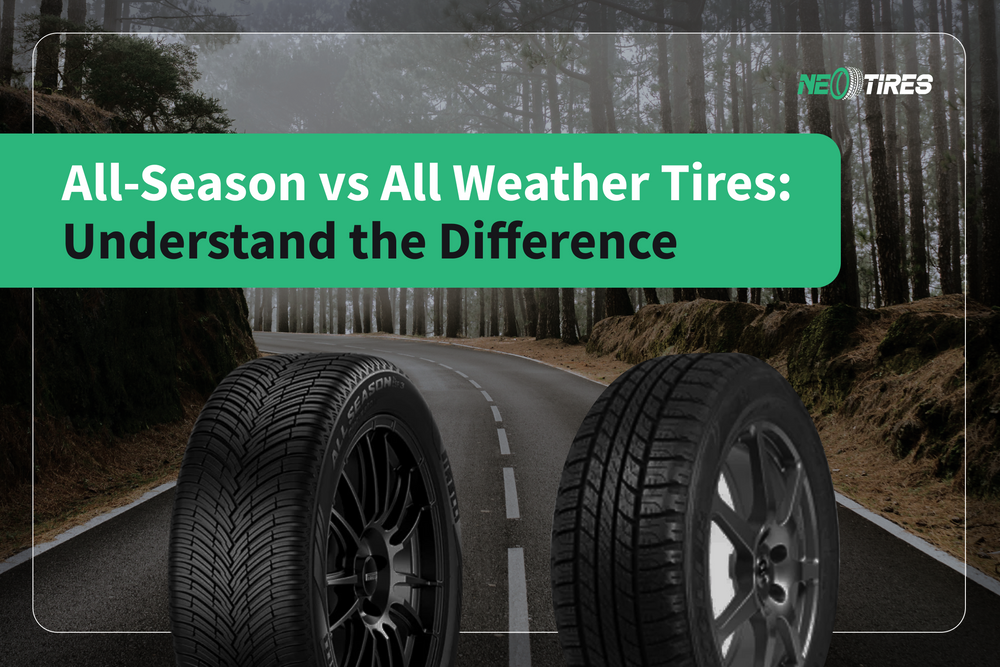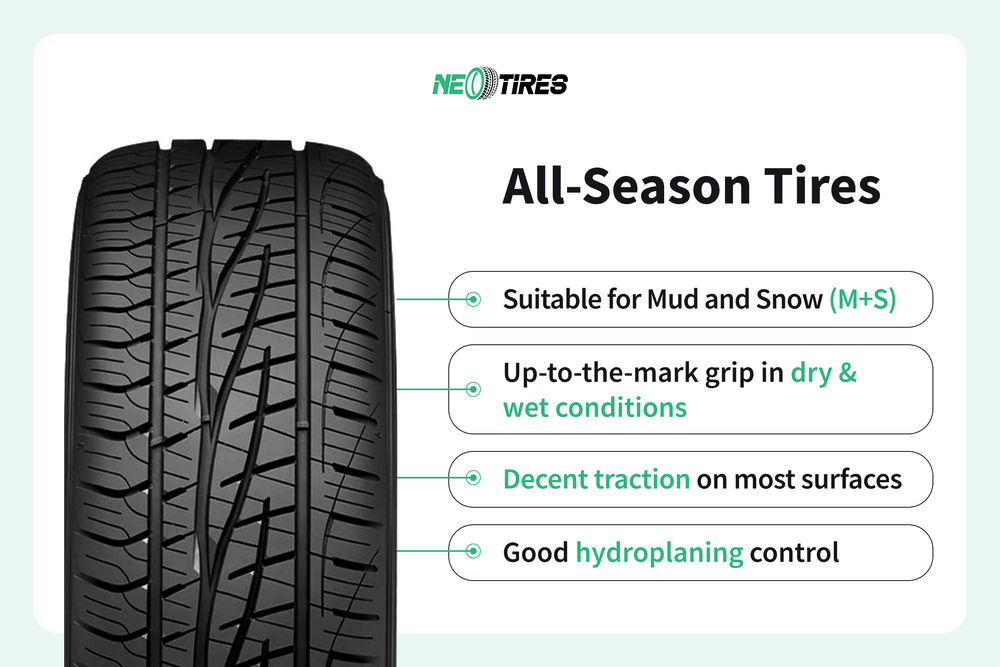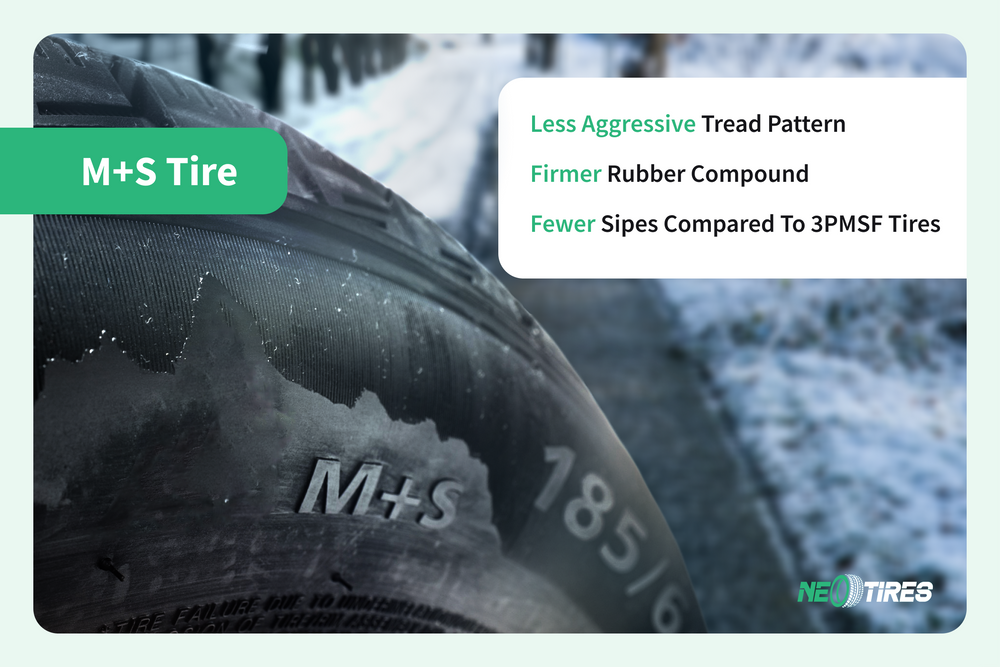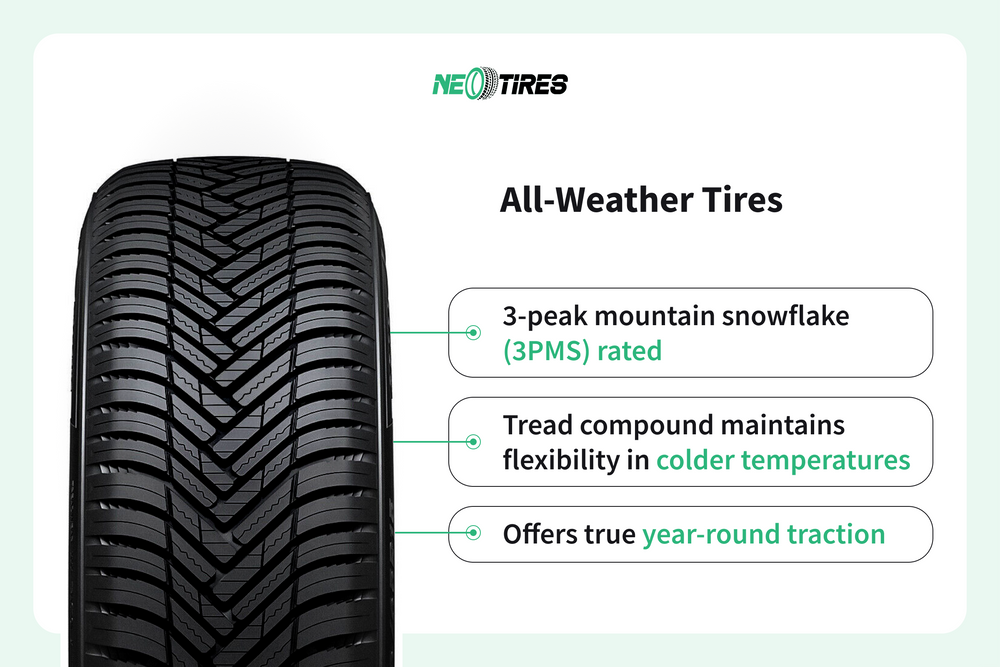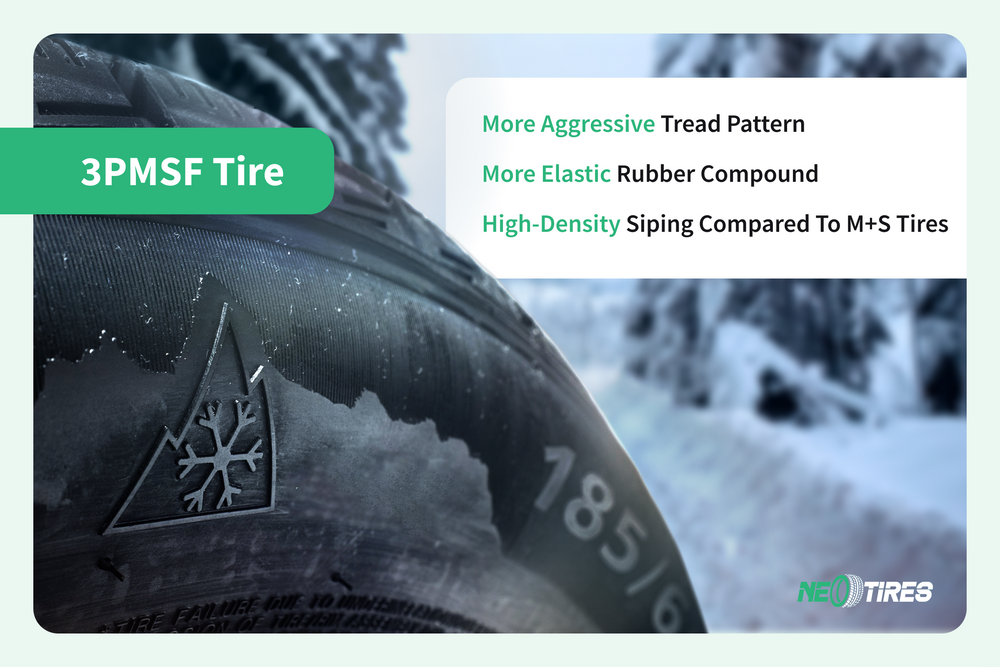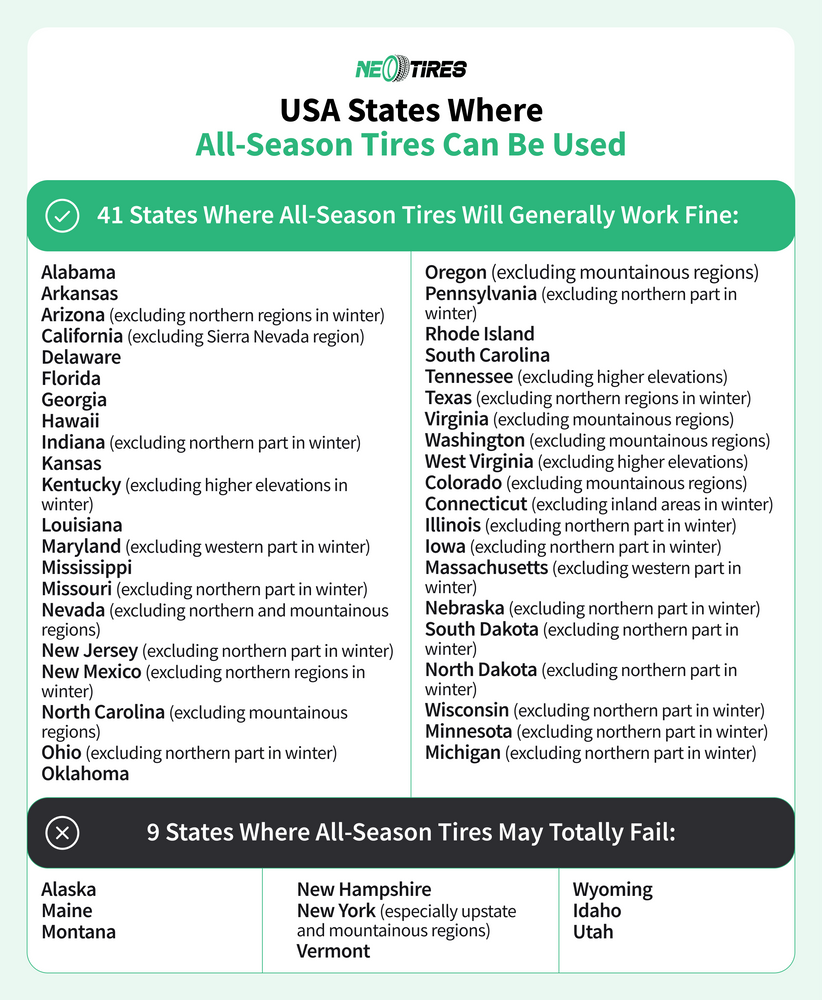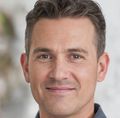The debate between all-weather and all-season tires can confuse many drivers. People often think they are the same, but they have important differences. This section will help you understand the difference between them so you can choose the best one for snow.
What Are All-Season Tires?
All-season tires are made to work in many types of weather: dry, wet, cold, and warm. They offer a good grip on both wet and dry roads. These tires also work well in light snow.
All Season Tires Key Features
Three key features determine an AS tire:
- Symmetrical tread patterns (usually)
- Harder rubber compounds than summer tires
- Moderate tread depth for grip in wet and light snow
All Season Tires Pros
All-season tires are good for most weather conditions. They last a long time, about 5,000 to 7,000 miles.
All Season Tires Cons
These tires don’t do well in very harsh weather, like heavy snow or ice. They also don’t perform as well in hot weather compared to summer tires. All-season tires also don’t handle as well as high-performance tires.
Is There a Symbol for All Season Tires?
All-season tires have the "M+S" symbol on their sidewall, which means they work well in light snow.
The NHTSA says all-season tires balance performance in both wet and dry conditions, with some ability to handle winter. However, they don't perform as well as winter or summer tires in very cold or hot weather.
Popular All-Season Tires
What Are All Weather Tires?
All-weather tires are a mix of winter and all-season tires. They provide year-round performance but work better in harsh winter conditions. All-weather tires are certified for ice and deep snow, with the 3PMSF (3-Peak Mountain Snowflake) symbol.
All-Weather Tires Key Features
All-weather tires have softer rubber, which helps them grip better in winter. They also have deeper treads to handle deep snow. Their tread design helps them grip snow and ice better.
All-Weather Tires Pros
All-weather tires work well year-round. They perform great in ice and snow (peak mountain snowflake 3pmsf -certified), and you don’t need to change tires for the seasons.
All-Weather Tires Cons
All-weather tires wear out faster because of their softer rubber. They don’t perform as well as winter tires in snow and ice. They also don’t perform as well as summer tires in hot weather and can be less fuel-efficient.
What Is the Code for All-Weather Tires?
All-weather tires have the 3PMSF symbol. This shows they meet the highest standards for winter performance in harsh winter weather.
Popular All-Weather Tires
What's The Difference Between AS and All-Weather Tires?
The biggest difference is how well they perform in winter. All-weather tires, with the 3PMSF symbol, perform better in snow and ice.
All-season tires last longer in warm weather but become stiff in the cold. All-weather tires stay soft in the cold but wear out faster in warm weather.
AS Tires VS All Weather Tires In Dry Conditions
All-season tires generally deliver better performance in dry conditions than all-weather tires. All season tires have less aggressive tread and harder compounds. This allows them to grip better on dry surfaces.
AS Tires VS All Weather Tires In Wet Conditions
In wet conditions, AS tires offer reliable performance. Their tread design is optimized to control hydroplaning and wet roads. All-weather tires typically perform better in harsh winter weather. Their softer rubber compound and deeper grooves ensure better grip and braking in slush, snow, and ice.
AS Tires VS All Weather Tires In Snow & Ice
All-season tires yield to all-weather tires on ice. According to the Tire and Rubber Association of Canada- "All-weather tires provide cold-weather performance that is superior to an all-season tire and is comparable to a winter tire." This means higher grip during winter driving, shorter braking distance, more confident acceleration, and safer cornering in extreme winter conditions.
AS Tires VS All Weather Tires In Summer Conditions
The harder compound of all-season tires resists high temperatures better than all-weather tires. All-weather tires have higher rolling resistance in the summer due to softer compounds. This affects handling and fuel consumption.
US-Specific Considerations: All-Weather VS AS Tires
Regional Climate Variations
Drivers should choose tires according to their local climate, considering the rich U.S. climatic variation. Consider the table below when choosing between all-weather vs all-season ties:
| US Area | Winter Severity | Type of Tires Recommended |
| Southeast and Southwest | Mild winters | All-season |
| Northeast and Midwest | Harsh Winters | All-weather |
| Pacific Northwest | Frequent rain/occasional snow | All-weather |
US Regulations Regarding All-Season/All-Weather Tires
Some states have rules about tire types. For example, Colorado's Traction Law requires snow tires, all-weather tires (with the mountain snowflake symbol), or traction devices during certain times of the year. All-season tires might need extra traction devices like snow chains or snow socks in these areas.
Which is Better, All Season or All Weather?
To choose between all-season and all-weather tires, think about:
- The weather where you live
- Your driving habits
- Whether you want to switch tires for the seasons
- Your vehicle type
All-season tires work for most drivers. However, all-weather tires are better if you live in an area with harsh winter weather.
Looking For All-Season or All-Weather Tires?
NeoTires can help you find the right tires for any weather. Whether you need year-round comfort or better winter performance, we’re here to help.
Explore our top-rated all-weather and all-season tires, or contact us for expert advice!
Drive safely and choose your tires wisely!




